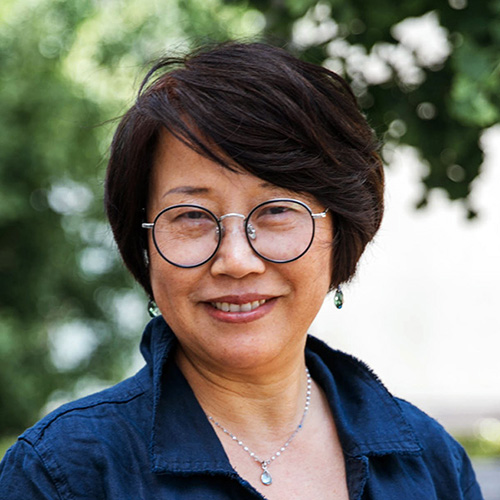
December 12, 2023 9:30 am - 12:00 pm PST
Researchers and faculty at UC Berkeley’s Center for the Built Environment are pursuing wide-ranging research in collaboration with leaders from industry and academia to study technologies and design approaches for decarbonizing buildings while improving indoor environments. This course will feature insights and research findings that hold valuable lessons for commercial building stakeholders, with a focus on benefits and strategies for integrating of ceiling fans with HVAC systems, while also sharing newly completed design resources.
First, Stefano Schiavon will present a field study in a zero-energy office building retrofitted with fans, which found a 32% HVAC energy reduction and also high levels of comfort when fans were used with a higher AC setpoint temperature. Next, Hui Zhang will present research results from several studies on an innovative approach in which ceiling fans are used in lieu of terminal ductwork and diffusers, dubbed ceiling fan integrated air conditioning, or CFIAC. The research found that this approach significantly reduced initial mechanical construction costs, and it is highly effective in spaces with open ceilings, or where expressing architectural form or structure is desired. Finally, Carlos Duarte will present a simulation study that found promising results with elevated air movement on the steady-state cooling capacity of radiant systems when coupled with ceiling fans. The schedule will allow time for Q&A following each talk, and will end with a panel discussion so that participants can engage with all the speakers.
This virtual event is free and open to the public, and co-organized by the PG&E Pacific Energy Center and the Center for the Built Environment (CBE) at UC Berkeley.
Speakers and Presentations
-

Carlos Duarte, PhD
Assistant Professional Researcher, Center for the Built Environment, UC Berkeley
Presentation: Effect of Elevated Air Movement on Radiant and Ceiling Fan Coupled Systems
Carlos Duarte has conducted extensive research on HVAC systems design and operation, and on the development of tools that help building industry stakeholders. He is currently working on a project to standardize semantic descriptions of equipment, control points and locations along their relationships to make it easier to extract actionable information from the wealth of data that buildings produce. He has also conducted extensive research on high thermal-mass radiant systems, including cooling loads, cooling capacity and controls. Carlos received a PhD in Architecture at UC Berkeley, and BS and MS degrees in Mechanical Engineering from the University of Idaho.
-

Stefano Schiavon, PhD
Professor of Architecture and Civil and Environmental Engineering, UC Berkeley
Presentation: Energy Savings and Thermal Comfort in a Zero Energy Office Building with Fans in Singapore
Stefano Schiavon’s research is focused on finding ways to reduce energy consumption in buildings while also increasing indoor environmental quality. He has worked on research related to personal comfort models and systems, occupant satisfaction, underfloor air distribution, radiant systems, building energy simulation, air movement, LEED, thermal comfort and statistical modeling. He has experience with laboratory measurements, post-occupancy evaluation and building performance simulation. He is a faculty researcher with Berkeley’s Center for the Built Environment (CBE) and the international research program SinBerBEST. His accolades include the REHVA Young Scientist Award, the ASHRAE Ralph Nevins Physiology and Human Environment Award, and three Best Paper Awards from Building and Environment.
-

Hui Zhang, PhD
Professional Researcher, Center for the Built Environment, UC Berkeley
Presentation: Research on Smart Integration of Ceiling Fans with HVAC Systems
Hui Zhang focuses on human thermal comfort in complex environments and comfort modeling. She holds a PhD in Building Science from the Department of Architecture at UC Berkeley. She received the ASHRAE Ralph Nevins Physiology and Human Environment Award for her PhD dissertation study, “Local Thermal Comfort in Asymmetrical and Transient Environments.” She received her MS in Architecture in and her BA in Engineering from Tsinghua University, Beijing, China. She previously taught in the Architecture Department of Tsinghua University as an assistant professor for three years. Her research work there included energy efficiency analysis in buildings, passive solar house design and human thermal comfort.
Continuing Education
At the conclusion of this course, participants will be able to:
- Explain how air movement with ceiling or desk fans can offset a higher cooling set point, saving significant HVAC energy while maintaining comfort.
- Summarize how coupling ceiling fans with high-mass radiant cooling systems can lead to operational energy savings and load shifting.
- Demonstrate knowledge of an innovative method in which ceiling fans are integrated with HVAC design to reduce the cost of installed terminal HVAC ductwork and diffusers.
- Summarize research that shows how fans can provide effective mixing of supply air in lieu of conventional terminal ductwork.
This course qualifies for 2.5 AIA HSW learning units.
Organizers

